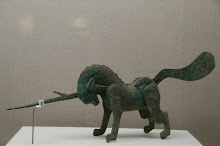


1,finding people and place~土、潮-动、静(30min)
+review
+summary(one sentence per whom)
2,new material:changing,q...(50min)
3,rapid concept design on class(basing on gaming :who\where\when\what)(45min)
4,methods overview+questionnaire+interview(th)
understanding people
• Carry out field studies – spend as much time as possible in the users’
context. Be both in theirworld while at the same time retaining an objective,
questioning perspective. Record as much ofwhat is going on as possible – take a
field notebook, camera, recording device and the like. Aswell as watching, do
some semi-structured interviewing, in situ.• Provide your informants with ways to self-report: give them diaries to fill
in, devices to capturetheir thoughts, telephone numbers to call and leave
messages on, disposable cameras to snapimportant parts of days, and so on• Carry out follow-up interviews away from the scene; bring groups in for
focus-group discussions.• Analyze your observations using insight and experience to arrive at useful
design-guiding accountsand other artifacts (like analyses that show the
structure of a set of activities the user carries out).-"mobile interaction design"Jones, J and Marsden G (2005)
问卷:
1. 使用正确的语言
2. 传递准确的信息3. 消除错误的假设
4. 定义完整的集合
5. 提供明晰的标准
6. 杜绝无意的诱导
-from Min Lin(UMBC)在现场问卷中,以下是按照行为理论中的四条原则来分组的,
手段、目标:
谁在使用或者将要使用该服务(产品)?
他们想要达到的目标和子目标是什么?
评判目标成功、失败的标准是什么?
用到了哪些问题查找的策略和技术?
要实现目标,需要在做出选择和使用上加上哪些限制?
各目标之间存在哪些潜在的冲突?
那些与其他服务、产品存在联系的目标,和普通目标之间又有何潜在冲突?
这些冲突怎么样解决?
环境:
用户还有那些服务、产品选择?
其他选择怎样才能与我们设计的新情景相结合?
用户在什么层次上需要一些必要的帮助?
帮助能够在多大程度上被共享?
环境的空间布局和当前组织情况是怎样的?
工作是怎么样划分的?要考虑在不同那个的地点同步进行和不同进行的情况。
学习、认知、清晰度:
用户哪一部分行为需要被学习和内化?
在该服务、产品中,哪些知识仍然是“在现实世界中”的?
掌握新的操作和运行,需要多长的时间,付出多大的努力?
用户用于自我观察和思考的时间有多长?
就描述自己所遇到的问题而言,服务、产品改变对用户有多大的帮助?
当问题出现时,有哪些策略和步骤可供用户(客户、店员)相互帮助?
发展:
该服务、产品的改变对于目前人们的行为方式将会产生什么影响?
目前用户对于该设计、服务、产品的态度怎样(比如抵制),随着时间的推移,又将如何变化?
在这一改变执行后,有哪些新的目标将变得可以实现?
-"mobile interaction design"Jones, J and Marsden G (2005)访问:
In an elicitation context, the semi-structured interview is generally most fruitful. However, Fowler and Mangione give an excellent account of how to conduct structured interviews should these be needed. There are typically four phases in the interview.The "nurturing" phase.(暖场) This is the initial warm-up to the interview with pleasantries exchanged, and introductions made.
The "energising" phase. (热身)Here the area of discourse, and any existing problems are identified.
The "body" of the interview. (高峰)This is the peak phase of activity, where the interviewer is continually probing, ideally asking open-ended questions about issues to understand the range of responses the users produce. It is important at this stage for the interviewer to remain analytical and neutral.
The "closing" phase. (结语)Summaries may be given as to what has taken place.Subsequent actions are noted, and future planning is made.
Before the interviews, the interview team should decide on a list of issues that will be brought up with each user, and identify strategies and ‘for examples’ in case the users find it difficult to answer to some topics.
After the interviews, the design team should pool their notes and present a summary of user reactions to each topic. If more than one interviewee is present, the interviewers may be increased in number but should never exceed the number of interviewees by more than one.
-from UCC
+the semi-structured interview
+follow-up interviews
what students have to finish before class_4(Thursday):
1,one blog for "people and place_XXX"
2,one blog for "concept design_XXX"
3, your draft of questionnaire and interview(depends)


没有评论:
发表评论